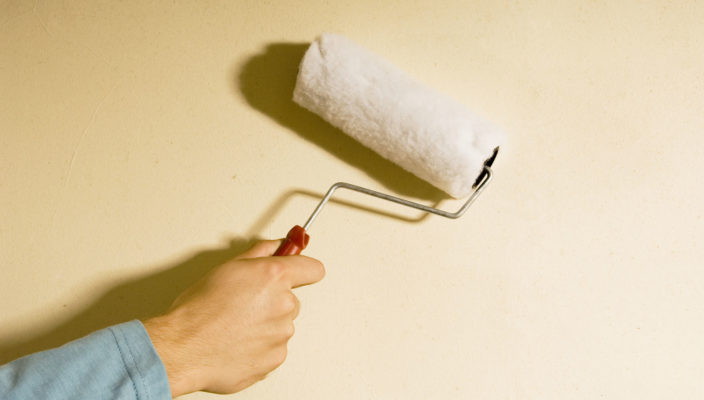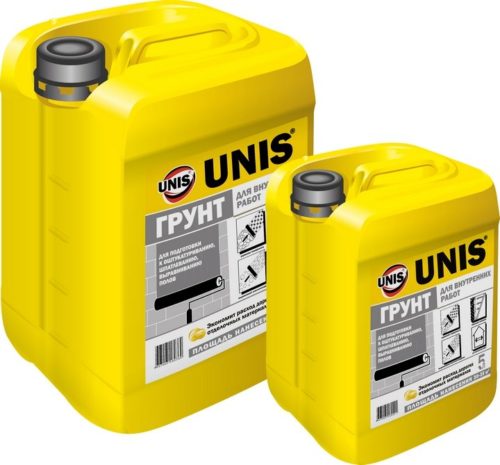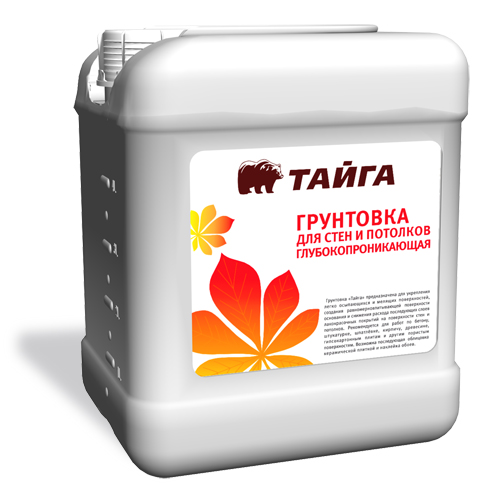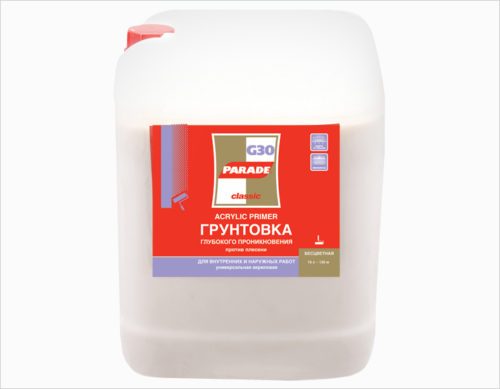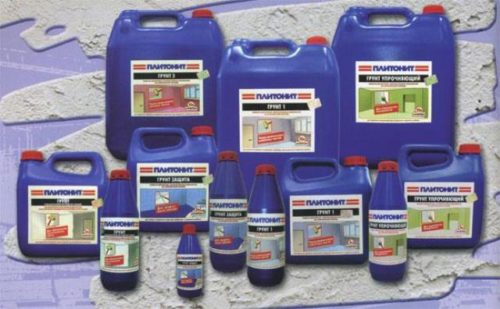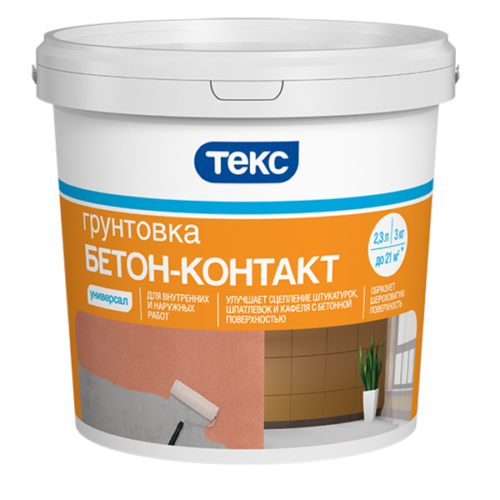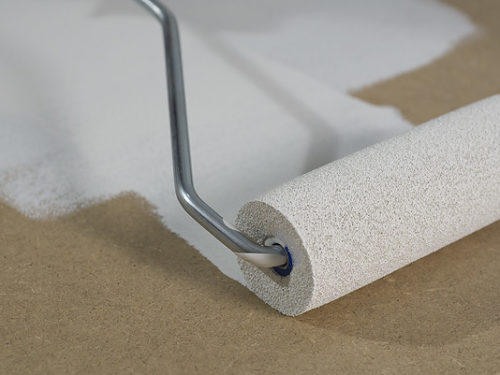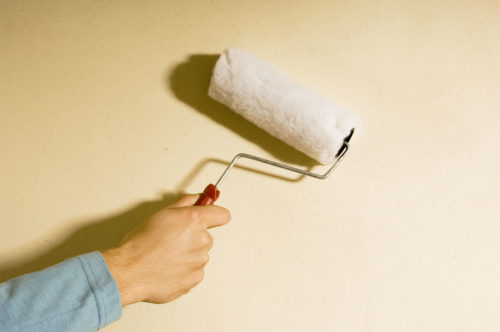During the repair work of any complexity in a residential room or office building, additional treatment of the surface of the ceiling and walls is simply necessary. For these purposes, primer formulations are used or simply - "primers". Through the penetration, deep into the structure of the surface of the primer makes it monolithic, which prevents the collapse or squeezing. Many primer compositions contain antiseptic additives that protect the walls from the appearance of mold and fungus. Also during repair work, the surface primer allows remover from it the remnants of dirt filled with plaster, paint. Thanks to this, the coating layer will be more even and durable. Before painting wooden or metal products, they are also ground. This creates additional protection of corrosion materials, reduces paint consumption, and also helps to achieve a smooth beautiful layer. About what areas of primer use and their species are further in the article.
Content
Functional purpose of acrylic primer and its composition
Such material is universal and is suitable for covering any surface, except for metal. If they treat a metal surface, then with time, rusty stains may appear on it, since water is the basis for its manufacture. The composition of acrylic primer includes:
- Binder. Olife or alkyd resins are most often protrude as the latter.
- Water acrylic dispersion.
- Painting pigment. It gives primer the necessary color and shade, although most often such compositions have a white color.
- Fillers. They create the volume and betray the composition of the required density. As a filler for acrylic primers, chalk, microworodor or mica are used.
- Drying catalyst. Designed to accelerate the drying process. It is very important to reduce the cost of time for the production of work.
- Target additives. They are injected into the primer to give it certain qualities. Ethylene glycol, biocide, defoamer are used as such additives.
According to their characteristics, primers are divided into:
- Primer deep penetration. Due to their composition, they can penetrate deeply inside the surface structure, strengthening it. This group includes primers from mold.
- Adhesive primers. Their main purpose is to improve the clutch of the surface with the subsequent material.
- Impregnate. Designed to impregnate the finished surface to protect it from external influence.
Alkyd primers
Alkid primers are used to improve the quality of various surfaces: concrete, steel, wood. Basically such a primer is the main layer for further painting. At the same time, the consumption of the latter decreases noticeably, which makes the process of work more economical. The primer fills all the pores and recesses of the tree or metal, from which the layer of paint will be smooth and smooth. Such a primer will dry for quite a while - about 15 hours. Alkyd mixtures have a different basis that affects its operational characteristics. Thus, the primer based on zinc phosphate has excellent anti-corrosion properties in combination with alkyd paint coating. Zinc chromat-based primer is a more versatile material and is suitable for use for a wide range of surfaces with the exception of plaster and gypsum.
Due to the fact that the alkyd soil has a large number of polymer compounds in its composition, it:
- Increases the strength of the main finishing material.
- Applies anti-corrosion resistance for steel and other metals.
- Protects the surface from fungus and mold.
- Makes the surface more resistant to temperature drops and moisture influence.
- Protects from the harmful effects of chemical compounds.
- Reduces the likelihood of tree swelling when moisture exposure.
- Increases the strength and durability of the base.
Types of primer repair:
- Glifthali primers. These mixtures consist of the base, filler and coloring pigment. Suitable for use both indoors and external works. When applied on the treated surface, a water-repellent film appears, which prevents the corrosion of the base. Glipteli primers are suitable for any surface. There are certain types of this material for use only on the surface of the metals.
- Perchlorevinyl primers. Apply only for external work, both on the surface of concrete and metal, and wood. It has a short duration of drying - less than 1 hour.
- Polyvinila acetate primer. It applies only as the basis for alkyd paints. Such a soil dries in just half an hour.
- Polystyrene primer. Perfect for processing wooden surfaces. Due to high toxicity, only for external work is applied only.
- Alkudo-urethane primer. It is mainly used to cover car bodies and other vehicles. Due to its composition, it has excellent moisture resistance and protects the metal from small mechanical damage.
Primer Betokontakt
These primers are used to work with concrete surfaces that poorly absorb moisture. The composition of such a mixture, which is often called mineral, enters the filler. As it often uses cement or quartz sand. Due to this, the treated surface has a noticeable roughness, which makes it possible to increase the adhesion of the subsequent layer. As a rule, gypsum or cement plaster is applied to mineral primer.
Binding substances in mineral primers are represented by acrylic copolymers, polyurethane and silicone. Acrylic resin-based bobconact is used to primer the inner surfaces of the rooms: walls, ceiling, floor. Polyurethane soil applied much less frequently. He will dry out longer, and it is much harder to work with him. The stratified layers should be very smooth. Polyurethane Betokontact applies only with polymer surface treatment.
Silicone mineral primer is used mainly for external work. First, it is pretty toxic, and secondly, it creates a high-strength protective layer, which indoors are optional. The advantage of this primer is that it has excellent vapor permeability, which allows the walls to breathe even after their processing. On top of this primer, only silicone paints can be applied.
Primer surface when sticking wallpaper
When repairing the walls of the room at each stage it is recommended to primitive surface. For these purposes, primer compounds based on polyvinyl acetate are the most relevant.
The first primer of the walls begin before applying plaster or starting putty. The order of work is as follows:
- First of all, a tool for applying primer (roller, brush) should be prepared. Next, the surface of the walls is cleaned from poorly fastened pieces of old plaster, and construction debris. Then they are thoroughly ground. The primer creates a good preparatory layer for which the putty will go to bed much better. In addition, penetrating deep inside, the primer is bonding the grains of plaster, not giving them to crumble in the future.
- For applying primer based on PVA uses a wide painting brush. It is necessary to work in glasses, as the drops of droplets are not desirable. The primer is better not to regret, apply a thick layer.
- After its drying, you can start a putty. Each time after grouting the last and before applying the next layer of the wall, it is necessary to primitive. The last time they do it before sticking wallpaper.
Rules for applying alkyd primer
Consider the basic rules for applying alkyd primer:
- Alkyd primers are used almost at all stages of finishing work, both for external surfaces and internal. The most popular composition of the soil on an alkyd basis is GF-021.
- This material has been produced ready for use, so no manipulation of it will have to produce. GF-021 primer is available in three colors: gray, brown and brick. In terms of its operational properties, they do not differ from each other. The choice of one or another color will depend on the color of the colorful coating. If the brown soil is put on a white paint on the base, the consumption of the first will be much more compared to the gray primer.
- Before starting work, the surface must be cleaned of dirt and rust residues. In order for the primer layer to firmly hold on the surface and lay down with smooth layers, the wall must be deguted. This is done using a solvent or White spirit. You just need to wipe the surface with a cloth moistened in the specified liquids, they dried instantly.
- The primer causes a painting brush or roller. On large areas (walls, ceiling, floor), it is possible to apply it using a spray gun, so the flow will be less, and the layer is even more. If the metal structures (beams, columns) are ground, then a painting brush is used.
- After drying the first layer, you can apply the second. More than two layers of primer, it makes no sense. Alkyd primer is completely dry during the day at an average temperature and humidity. Special requirements for storage are not presented. The material in a closed container does not lose its properties even at a negative temperature. If the primer thickens, you can add a little solvent before using it and stir thoroughly.

